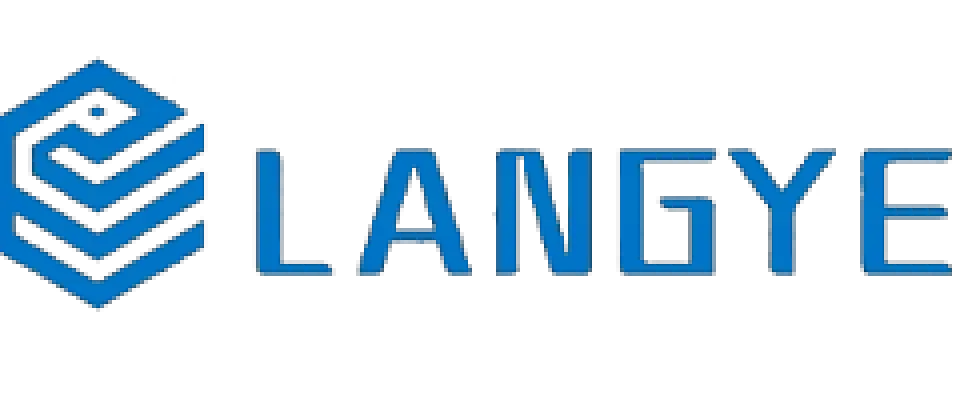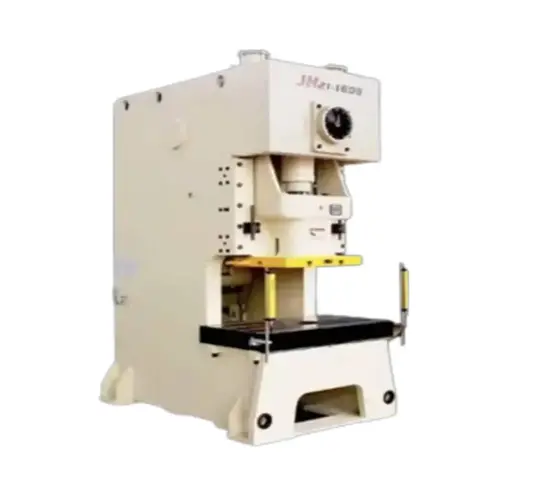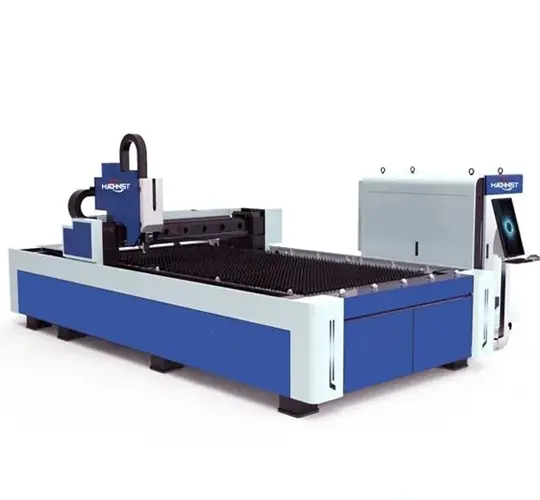The textile and fabric industry has embraced laser cutting as a transformative technology, offering unparalleled precision and speed compared to traditional methods. This comprehensive guide explores the core techniques of laser cutting and its applications across various textile materials. By enabling intricate designs with minimal material waste, laser cutting enhances efficiency and output quality. This technology is vital for designers, both small-scale and large, seeking to elevate their production processes. The following sections delve into the technical aspects of laser cutting machines and their diverse applications in industries such as fashion, automotive, and interior design.
How Is Fabric Cut With A Laser?
What is Laser Cutting?
Laser cutting employs a high-intensity laser beam to achieve precise cuts on nearly any material. The process involves directing the beam through a series of reflectors and lenses onto the fabric, where the concentrated heat vaporizes the targeted area, creating a clean cut. This movement is controlled by computer numerical control (CNC) systems, allowing for the accurate replication of complex designs. Key components of a laser cutting machine include the laser generator, the cutting head, and a support structure to hold the fabric in place. Adjustable settings such as power, speed, and frequency can be tailored to suit different fabric types, ensuring optimal performance and cut quality.
The Laser Beam Technology Explained
Laser beam technology represents a cutting-edge approach to fabric cutting and engraving. It utilizes a coherent, monochromatic light source generated by exciting a medium, such as fiber or carbon dioxide, with an external energy source. This excitation produces photons, which are amplified into a high-power beam. The beam is then focused through a lens system onto a specific area of the fabric, where its intense energy causes the material to melt, burn, or vaporize, resulting in a precise cut. By adjusting the beam's intensity and movement, intricate designs can be achieved with minimal thermal distortion, making this technology ideal for detailed textile work.
Difference Between Traditional Cutting And Laser Methods
Traditional fabric-cutting methods, such as scissors or rotary blades, rely on direct physical contact with the material, which can be time-consuming and prone to errors. These methods often cause fabric fraying or tearing due to the mechanical pressure applied, and achieving intricate designs is challenging due to their lack of precision. In contrast, laser cutting overcomes these limitations by using a non-contact process, eliminating tool wear and material deformation. This results in smooth, sealed edges and the ability to produce complex patterns efficiently. Additionally, laser cutting's programmability integrates seamlessly with computer-aided design systems, enabling rapid, consistent production suitable for both custom and mass-market applications.
What Types Of Fabrics Are Best Cut By Laser?
An Investigation Into Denim, Nylon, And Polyester
Polyester, a smooth and durable synthetic fabric, is highly suitable for laser cutting due to its ability to melt and seal edges during the process, minimizing fraying. This makes it a preferred choice in fashion, manufacturing, and home textiles where precision is paramount. Similarly, nylon, another synthetic material, benefits from laser cutting as the heat seals its edges, reducing loose fibers. This property is advantageous for technical applications like activewear and industrial textiles, where durability and clean cuts are essential. Denim, despite its thicker nature, can also be effectively cut with lasers by adjusting the beam's intensity. This allows for detailed designs and prevents fraying, making it valuable in the fashion industry where intricate detailing is often required.
What Precautions Are Most Important When Cutting Technical Textiles?
Technical textiles, used in specialized fields like aerospace, automotive, and medical industries, are well-suited for laser cutting due to its non-contact nature, which minimizes mechanical stress on delicate fibers. By fine-tuning laser settings, intricate shapes can be cut with precision across a variety of materials. However, careful consideration of the fabric's composition and thickness is crucial to ensure compatibility with the desired outcome. Synthetic materials like polyester and nylon, as well as certain technical textiles, yield the best results due to their ability to seal edges during cutting, maintaining structural integrity and achieving clean, precise cuts.
What Are The Benefits Of Laser Cutting Fabrics?
Cutting Fabrics With High Efficiency And Good Quality
Laser cutting delivers exceptional accuracy and smooth edges when shaping materials like polyester, eliminating the need for additional finishing. The non-contact process minimizes fabric distortion, preserving the material's integrity and reducing errors. Synthetic fabrics benefit from automatic edge sealing, enhancing durability and aesthetic appeal. This precision is particularly valuable for intricate designs, ensuring high-quality outcomes that meet the demands of detailed textile applications.
Avoiding Fray Caused By Cutting
Laser cutting excels at preventing fraying, especially in synthetic fabrics, by sealing edges during the cutting process. This eliminates the need for additional materials or post-processing, reducing waste and supporting eco-friendly manufacturing practices. The precise nature of laser cuts ensures minimal errors, further optimizing material usage and contributing to sustainable production methods.
Efficiency In The Cutting Process
The efficiency of laser cutting lies in its high operating speed and minimal setup time compared to traditional methods. Automated laser systems can operate continuously, reducing downtime and boosting production capacity. Integration with SmartCAD software enables rapid, precise cutting of complex shapes, while the absence of physical tools lowers maintenance costs and simplifies design changes. This streamlined process enhances productivity, allowing manufacturers to adapt quickly to varying material types and thicknesses.
What Is A Fabric Laser Cutter?
Components Of A Laser System
A fabric laser cutter comprises several key components that work together to achieve precise cuts. The laser source generates the beam, which is amplified by an optical resonator equipped with mirrors. A delivery system directs the beam onto the target material, while control systems regulate power and movement for accuracy. Auxiliary systems, such as exhaust and filtration units, manage cutting fumes and debris, ensuring a safe and clean working environment. These components collectively enable high-quality fabric cutting with consistent results.
Evaluating CO2 Laser And Fiber Lasers
CO2 and fiber lasers are commonly used in fabric cutting, each offering distinct advantages. CO2 lasers, which use a gas-filled resonator, excel at cutting nonmetallic materials like textiles, plastics, and wood, delivering high-quality edges on thicker fabrics due to their longer wavelengths. Fiber lasers, on the other hand, are more energy-efficient and faster when cutting thin to medium fabrics, as these materials absorb their shorter wavelengths more readily. While fiber lasers are typically used for metals, they can be adapted for textiles in high-speed production. Choosing between the two depends on the material, production goals, and desired efficiency.
Selecting The Best Laser Cutter For Fabrics
Selecting the ideal laser cutter for fabrics depends on the materials and production requirements. CO2 lasers are often preferred for textiles due to their versatility, delivering smooth edges across a wide range of nonmetallic materials, including denser fabrics. For high-speed production involving thinner fabrics or metal components, fiber lasers offer greater efficiency. Factors such as machine size, power, cost, and the desired edge quality should also guide the decision, ensuring a balance between performance and practicality.
How Is Laser Technology Used In The Clothing Industry?
Uses In Engraving And Cutting
Laser technology seamlessly integrates into the clothing industry, offering efficiency and versatility in cutting and engraving. Laser cutters produce precise, high-quality cuts, minimizing fabric waste in garment production. Additionally, lasers enable intricate engravings that enhance the aesthetic value of fabrics, supporting rapid prototyping and scalable manufacturing. This flexibility allows manufacturers to adapt to changing market demands, delivering innovative designs and high-quality products with reduced lead times.
Meeting The Demands Of Cutting Through Laser Technology
Laser cutting meets the clothing industry's need for speed, precision, and complex designs. It efficiently processes materials like cotton, polyester, nylon, and leather with minimal waste, as the non-contact process prevents deformation or discoloration. Laser systems, combined with CAD software, ensure repeatable accuracy, making them ideal for both mass production and custom orders. This enhances operational efficiency and elevates the quality of textile outputs.
Benefits In Comparison With Conventional Cutting Practices
Compared to traditional cutting methods, laser technology offers significant advantages in the clothing industry. Its precision reduces material waste, as cuts are executed with minimal errors. The heat-sealing effect prevents fraying, unlike conventional tools that often damage edges. Laser machines operate at higher speeds, shortening production times and increasing output. Additionally, their compatibility with CAD systems ensures consistent patterns, enabling complex designs that are difficult to achieve manually, thus streamlining the design and production process.
What Are The Potential Effects On The Environment?
Managing Fume Exhaust
Laser cutting generates fumes, particles, and volatile organic compounds (VOCs) that require careful management to mitigate environmental and safety risks. Effective ventilation systems equipped with HEPA and activated carbon filters are essential to capture harmful emissions. Regular maintenance of these systems ensures compliance with environmental regulations and protects worker health, minimizing the ecological impact of fabric laser cutting operations.
Sustainable Practices In Textile Cutting
Laser cutting supports sustainable textile production by reducing material waste through precise cuts that maximize fabric usage. Choosing sustainable raw materials and renewable energy sources further lowers the environmental footprint. Recycling cutting waste contributes to a circular economy, reducing landfill strain. By adopting these practices, textile manufacturers can align with global sustainability goals, minimizing their environmental impact while maintaining high-quality production standards.
 English
English 日本語
日本語 한국어
한국어 français
français Deutsch
Deutsch Español
Español русский
русский Türkçe
Türkçe português
português العربية
العربية Polska
Polska हिंदी
हिंदी Indonesia
Indonesia



